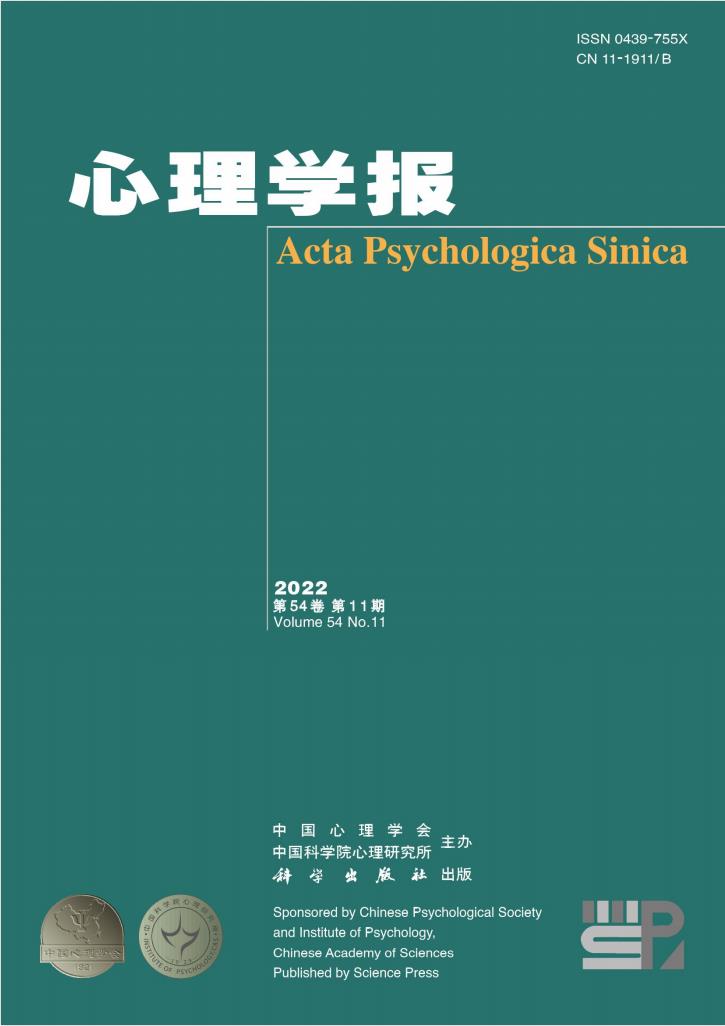The relationship between musical training and inhibitory control: An ERPs study
IF 1.3
4区 心理学
Q3 PSYCHOLOGY, MULTIDISCIPLINARY
引用次数: 2
Abstract
Inhibitory control, a fundamental component of executive function, refers to the ability to control one’s attention and suppress internal and external interferences effectively to achieve the setting targets. It plays a crucial role in allowing us to adapt to the environment, and serves as a basis of other cognitive functions, such as reasoning, planning and learning. Moreover, several psychiatric disorders, such as addictions, attention deficit hyperactivity and obsessive-compulsive disorder have been shown to involve deficits in inhibitory control. Thus, establishing ways in which inhibitory control can be improved constitutes an important issue for psychologist and medical scientist. In recent years, musical training has been suggested to be associated with improved executive functions, such as inhibitory control. However, the overall findings in these studies have been mixed. While some studies indicated a positive relationship between musical training and inhibitory control, other studies showed no facilitative effect of musical training. Importantly, however, inhibitory control is not a single function, but can be divided into response inhibition and interference control. Previous studies that assessed the relationship between musical training and inhibitory control failed to investigate these two separate components within the same experiment. Furthermore, its underlying neural mechanism remain elusive. Based on these considerations, the present study aimed to examine the relationship between musical training and inhibitory control through the Go/No-go (response inhibition) and Stroop (interference control) tasks by using event-related-potentials (ERPs). Experiments were carried room, approximately minutes. the Go/No-go task, participants press a keyboard button in response to white shapes (Go trials, 75%), while they had to inhibit responding to purple shapes (No-go trials, 25%). Each stimulus presented for 500 ms with an interstimulus interval of 1000 ms. The experiment consisted of 320 trials, presented in a random order. Performance was evaluated using a Signal Detection approach by calculating perceptual sensitivity via: d ′ = z (No-go hit rate) – z (Go false alarm rate). Higher d’ values indicate better response inhibition. In the Stroop task, participants were presented with Chinese color words (red, green, blue, yellow), printed in different colors. Stimuli were divided into word-color consistent trails (congruent, 50%) and word-color inconsistent trails (incongruent, 50%). A stimulus was presented for 1000 ms with a random interstimulus interval of 1000~1500 ms. Participants had to name the color in which the word was presented without paying attention to the word’s meaning. The experiment consisted of 240 trials, presented in a random order. The difference between accuracy in the congruent and the incongruent conditions is referred to as Stroop interference effect. Smaller effects are indicative of better interference control. The experimental sequence was balanced between participants. The behavioral results showed that music group had smaller interference effect than the control group in the Stroop task, while both groups performed similarly in the Go/No-go task. As for the ERP results, in Go/No-go task, the amplitudes of the N2 (N2d) and P3 difference waves, contrasting No-go and Go trials, were larger in music group than in control group. In the Stroop task, the amplitude of the N450 (N450d) difference wave, contrasting congruent and incongruent trials, were also larger in music group than in control group. However, the amplitude of the SP (SPd) difference wave, which serves as an index of conflict resolution, was similar between the two groups. The aim of present study was to explore the influence of music training on the cognitive and neural mechanisms governing inhibitory control. The present results supported the hypothesis that individuals that received music training had stronger conflict monitoring and motor inhibition abilities when completing the response inhibition task, as well as a better conflict monitoring ability when completing the interference control task. This indicates a potential association between music training and inhibitory control.音乐训练与抑制控制的关系:一项erp研究
抑制控制是执行功能的基本组成部分,是指控制自己的注意力,有效抑制内部和外部干扰,以实现设定目标的能力。它在让我们适应环境方面发挥着至关重要的作用,并作为其他认知功能的基础,如推理、计划和学习。此外,一些精神疾病,如成瘾、注意力缺陷多动和强迫症,已被证明与抑制控制缺陷有关。因此,建立改善抑制控制的方法对心理学家和医学家来说是一个重要的问题。近年来,音乐训练被认为与执行功能的改善有关,如抑制控制。然而,这些研究的总体结果喜忧参半。虽然一些研究表明音乐训练和抑制控制之间存在正相关关系,但其他研究表明音乐培训没有促进作用。然而,重要的是,抑制控制不是一个单一的功能,而是可以分为反应抑制和干扰控制。先前评估音乐训练和抑制控制之间关系的研究未能在同一实验中研究这两个独立的成分。此外,其潜在的神经机制仍然难以捉摸。基于这些考虑,本研究旨在通过使用事件相关电位(ERPs),通过Go/No-Go(反应抑制)和Stroop(干扰控制)任务来检验音乐训练与抑制控制之间的关系。实验在室内进行,大约需要几分钟。在进行/不进行任务时,参与者按下键盘按钮以响应白色形状(进行试验,75%),而他们必须抑制对紫色形状的反应(不进行试验,25%)。每个刺激持续500ms,间隔1000ms。实验由320次试验组成,按随机顺序进行。通过计算感知灵敏度,使用信号检测方法评估性能:d′=z(未命中率)–z(误报率)。d’值越高表示反应抑制效果越好。在Stroop任务中,参与者被呈现出不同颜色的中文单词(红、绿、蓝、黄)。刺激分为单词颜色一致性轨迹(一致,50%)和单词颜色不一致性轨迹。刺激时间为1000ms,随机间隔为1000~1500ms。参与者必须命名单词的颜色,而不必注意单词的含义。该实验由240个试验组成,按随机顺序进行。一致和不一致条件下精度之间的差异被称为斯特劳普干涉效应。较小的影响表示更好的干扰控制。实验顺序在参与者之间是平衡的。行为结果显示,音乐组在Stroop任务中的干扰效应小于对照组,而两组在Go/No-Go任务中的表现相似。就ERP结果而言,在Go/Nogo任务中,音乐组的N2(N2d)和P3差异波的振幅比对照组大。在Stroop任务中,音乐组的N450(N450d)差异波的振幅(对比一致和不一致试验)也比对照组大。然而,作为冲突解决指标的SP(SPd)差值波的振幅在两组之间相似。本研究的目的是探讨音乐训练对控制抑制的认知和神经机制的影响。目前的结果支持了这样一种假设,即接受音乐训练的个体在完成反应抑制任务时具有更强的冲突监测和运动抑制能力,以及在完成干扰控制任务时具有更好的冲突监测能力。这表明音乐训练和抑制控制之间存在潜在的联系。
本文章由计算机程序翻译,如有差异,请以英文原文为准。
求助全文
约1分钟内获得全文
求助全文
来源期刊

心理学报
Psychology-Psychology (all)
CiteScore
1.70
自引率
13.30%
发文量
1612
期刊介绍:
Acta Psychologica Sinica (ISSN 0439-755X) is a scholarly journal sponsored by the Chinese Psychological Society and the Institute of Psychology, Chinese Academy of Sciences, and published monthly by the Science Press.
Acta Psychologica Sinica has been included in many important national and international indexing systems such as SCOPUS (Elsevier), ESCI (Web of Science), PsycINFO (APA), CSCD. It is the flagship journal of the Chinese Psychological Society that publishes peer-reviewed original empirical studies and theoretical articles spanning the entire spectrum of scientific psychology.
Acta Psychologica Sinica publishes high-quality research that investigates the fundamental mechanisms of mind and behavior and aims to deliver scientific knowledge to enhance our understanding of culture and society. It welcomes submissions of manuscripts reporting research that is up-to-date, scientifically excellent, and of broad interest and significance.
 求助内容:
求助内容: 应助结果提醒方式:
应助结果提醒方式:


